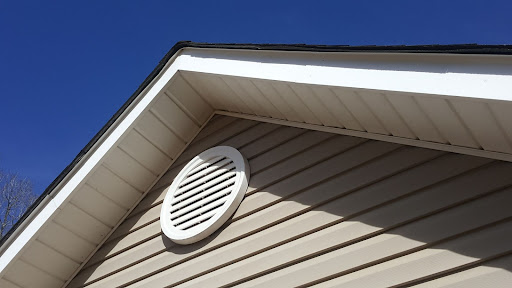While many view the purpose of the roof over their head as a structure to keep out precipitation and stay dry, the ventilation system in the attic plays a similarly important role in making your home comfortable. Ventilation allows fresh air to enter your home and grants a passage for still and stagnant air to exit, removing excess heat and moisture. As a result, proper ventilation is vital for temperature regulation, but when the roof venting is poor, it can lead to several problems. Here are the roof ventilation benefits that protect you from experiencing problems throughout the seasons.
Proper Roof Ventilation is Vital in the Summer
When the rays of the sun shine down onto a roof, it can warm up your attic considerably. This excess heat will escape if you have proper roof venting, but if the roof ventilation of your home is inadequate, then the summer warmth can cause more problems than just a blistering attic. The shingles on your roof may become damaged if they’re overheated, lowering their lifespan and costing you more in the long run. Additionally, when the unneeded heat seeps through the attic floor, it can blister paint and warp wooden structures in your home.
Poor roof venting will cost you more than just repairing damaged features. As more heat is trapped inside your house, your air conditioner will have to work harder to maintain the desired temperature. This causes energy needs to increase, which in turn makes your electricity bills higher than they need to be. By ensuring your roof ventilation is in good shape, you can save money and avoid extreme temperatures!
Roof Ventilation is also Essential in the Winter
Summer isn’t the only time of year that inadequate roof ventilation can increase your energy bills. If your attic can’t regulate temperature well in the winter, then your heater will have to work harder as well. However, this isn’t the only problem that poor roof venting can create in the winter months; in fact, all homes built in locations with extreme temperatures need to have the right roof ventilation to stave off problems.
For example, when you take showers or cook in the winter, all of the hot moisture will flow into the attic. Normally, that moisture will leave homes with good ventilation, but without an escape route, it can collect underneath the roof and condense due to the cold temperature. This condensed moisture can promote the growth of mold and mildew and make the insulation less effective.
Another ventilation problem that can arise during the cold months is ice dams. During the ice damming process, the heat trapped in a poorly ventilated attic melts the snow on the roof, which freezes again once it reaches the edge of the roof. The process can cause damage to your roof, as well as the attic itself and even the walls. But with good roof ventilation, the hot air can escape before it has a chance to melt the snow.
The next time you need emergency roofing services in Philadelphia, contact Philly Roofing today! Our talented team of roofers can also assist with flat roofing in Philadelphia and the surrounding area. Call now.



0 Comments